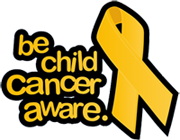Lymphoma is the third most common childhood cancer. It is cancer of the lymphatic system, which is made up of thin tubes that branch like blood vessels into all parts of the body. These lymph vessels carry lymph, a colorless, watery fluid containing white blood cells called lymphocytes. Along the network of vessels are lymph nodes, groups of small, bean-shaped organs that make and store infection-fighting cells.
There are clusters of lymph nodes in the underarm, groin, neck and abdomen. The lymph system also includes the spleen, the thymus and the tonsils. Because the lymph system is so extensive, lymphoma can start in many locations and spread to almost any organ or tissue.
There are two types of lymphoma — Hodgkin’s and non-Hodgkin’s. The cause for both diseases is unknown and it occurs in one child in 10,000. Hodgkin’s disease typically affects those age 14 and older.
Hodgkin’s lymphoma often occurs in one or more groups of lymph glands, most commonly in the neck. The first symptom is usually swollen glands. Often, the cancer is limited to a small number of closely related glands. In half of the children affected, it spreads to the chest.
The symptoms of Hodgkin’s lymphoma are
* Swollen lymph glands
* Sometimes a high fever
* Weight loss
* Night sweats
These symptoms are more common if the cancer is extensive.
For further information about Hodgkin’s Lymphoma please visit Macmillan Cancer Support


